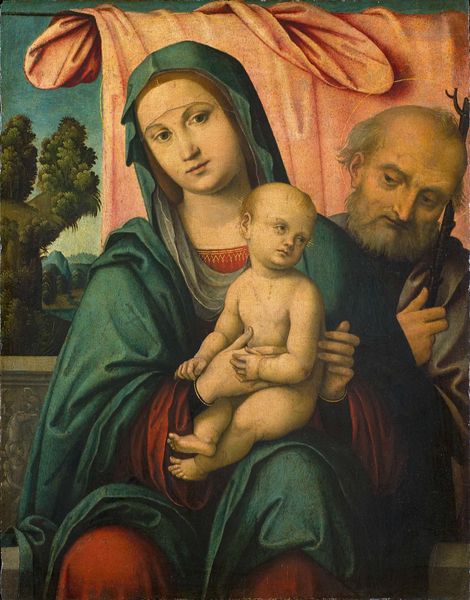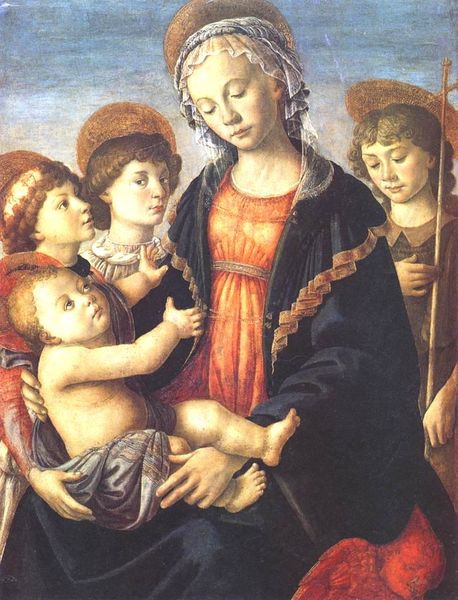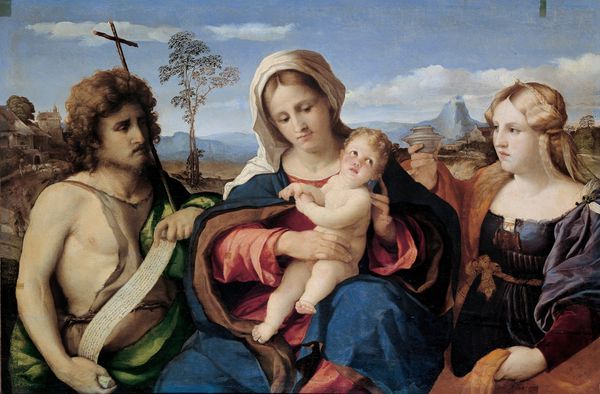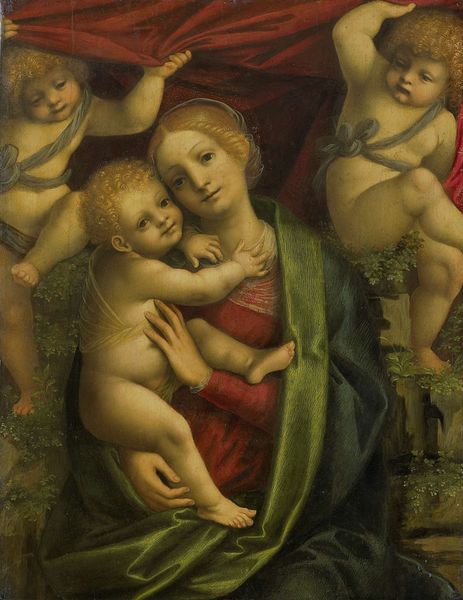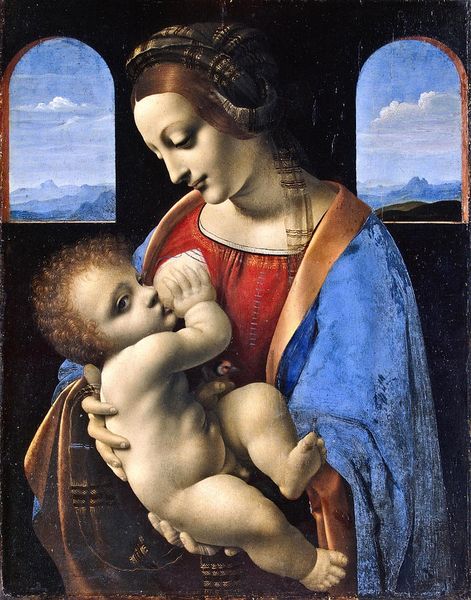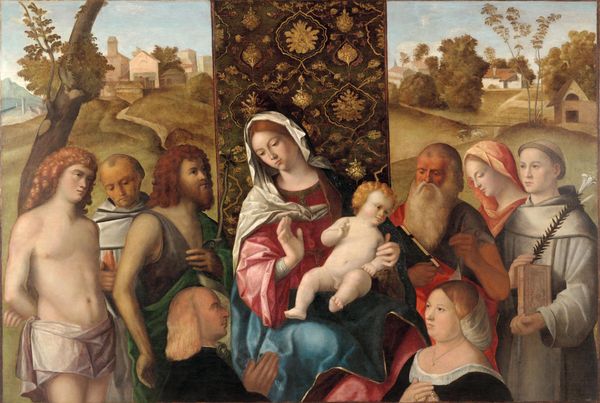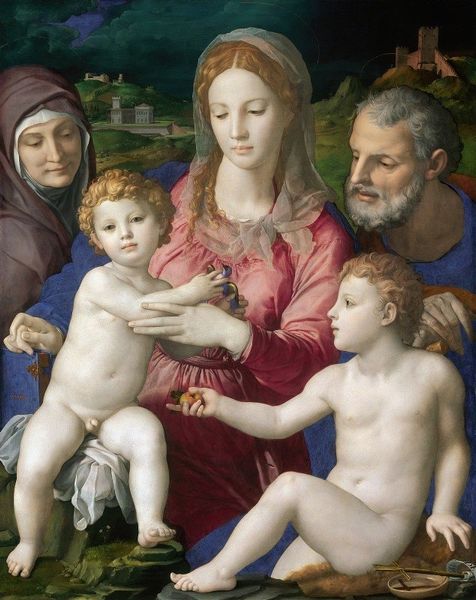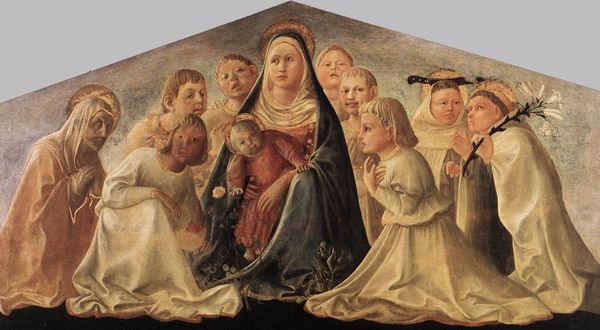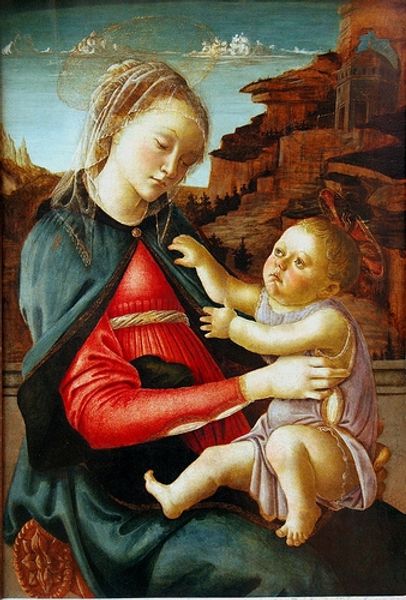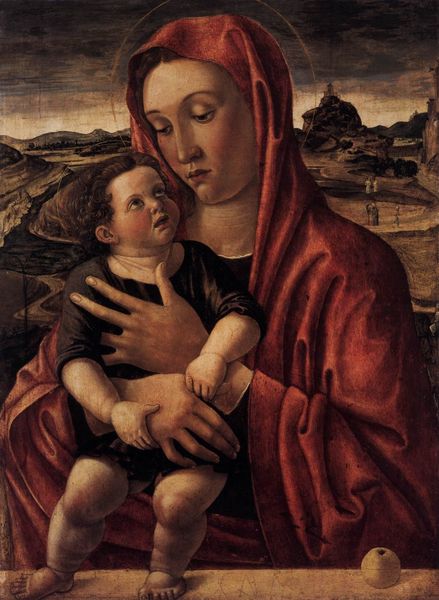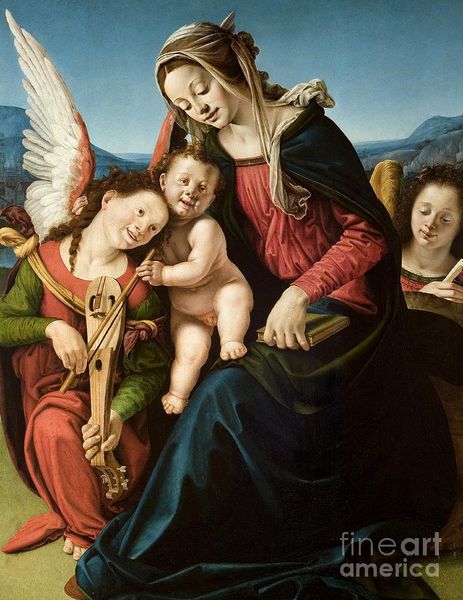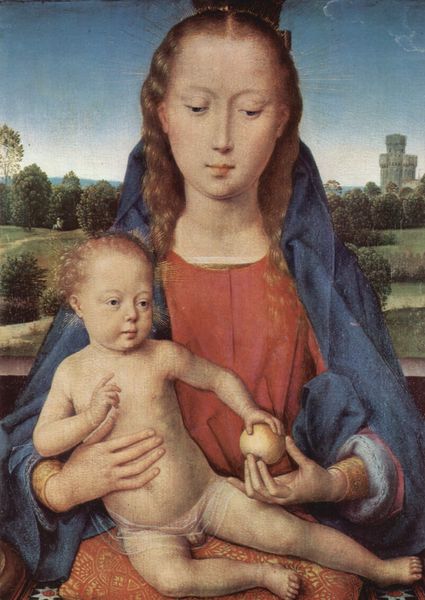
Madonna and Child with Saints and a Donor 1507
0:00
0:00
giovannibellini
San Francesco della Vigna, Venice, Italy
panel, painting, oil-paint
#
portrait
#
panel
#
allegory
#
narrative-art
#
painting
#
oil-paint
#
figuration
#
christianity
#
genre-painting
#
history-painting
#
italian-renaissance
#
early-renaissance
#
miniature
Dimensions: 145 x 90 cm
Copyright: Public domain
Curator: Bellini's "Madonna and Child with Saints and a Donor", dating back to 1507, offers a fascinating look at the Venetian Renaissance. It's painted in oil on panel and currently resides in San Francesco della Vigna in Venice. Editor: My initial impression is one of serene solemnity. Despite the array of figures, there's a quiet, almost mournful stillness to the scene. The colours are rich yet muted, evoking a sense of timelessness. Curator: Indeed. The donor portrait at the bottom is interesting. Lay patrons sought to associate themselves and their lineage with sacred figures; it was a marker of status but also social currency. Bellini masterfully places the figures in relationship to each other, navigating secular and religious representation. Editor: I'm immediately drawn to the figure of Saint Sebastian. Pierced with arrows, he's a potent symbol of resilience and faith in the face of suffering. But then, he’s juxtaposed with the vulnerable baby Jesus—such tender flesh, representing an entirely different aspect of sacrifice. This image explores profound human emotions through sacred imagery. Curator: What is significant to remember is that art in the Venetian Republic often took on civic duties in promoting and glorifying the state's cultural and religious ideals. Bellini received numerous public commissions from religious institutions, creating visual sermons in many ways. Editor: I can see that the landscape isn’t just a backdrop, but rather adds to the iconographic layering. The hills and the distant architecture almost feel like symbols themselves—perhaps alluding to earthly dominion and the promise of paradise? There's a sense of carefully constructed meaning behind every element. Curator: Precisely, Bellini synthesizes form, colour, and religious symbolism to reflect the societal values and religious practices of the period. These 'sacra conversazione' paintings were highly prized, as much for their artistry as for the spiritual aura they invoked. Editor: Examining the continuity of such symbolic visual language can offer us valuable insight into understanding collective cultural anxieties and aspirations of the society that embraced them. Bellini's painting continues to resonate across the centuries, as a beautiful example of such integration. Curator: Yes, it serves as a visual testament to the intertwined dynamics of art, religion, and the societal structures in the vibrant context of Renaissance Venice.
Comments
No comments
Be the first to comment and join the conversation on the ultimate creative platform.

